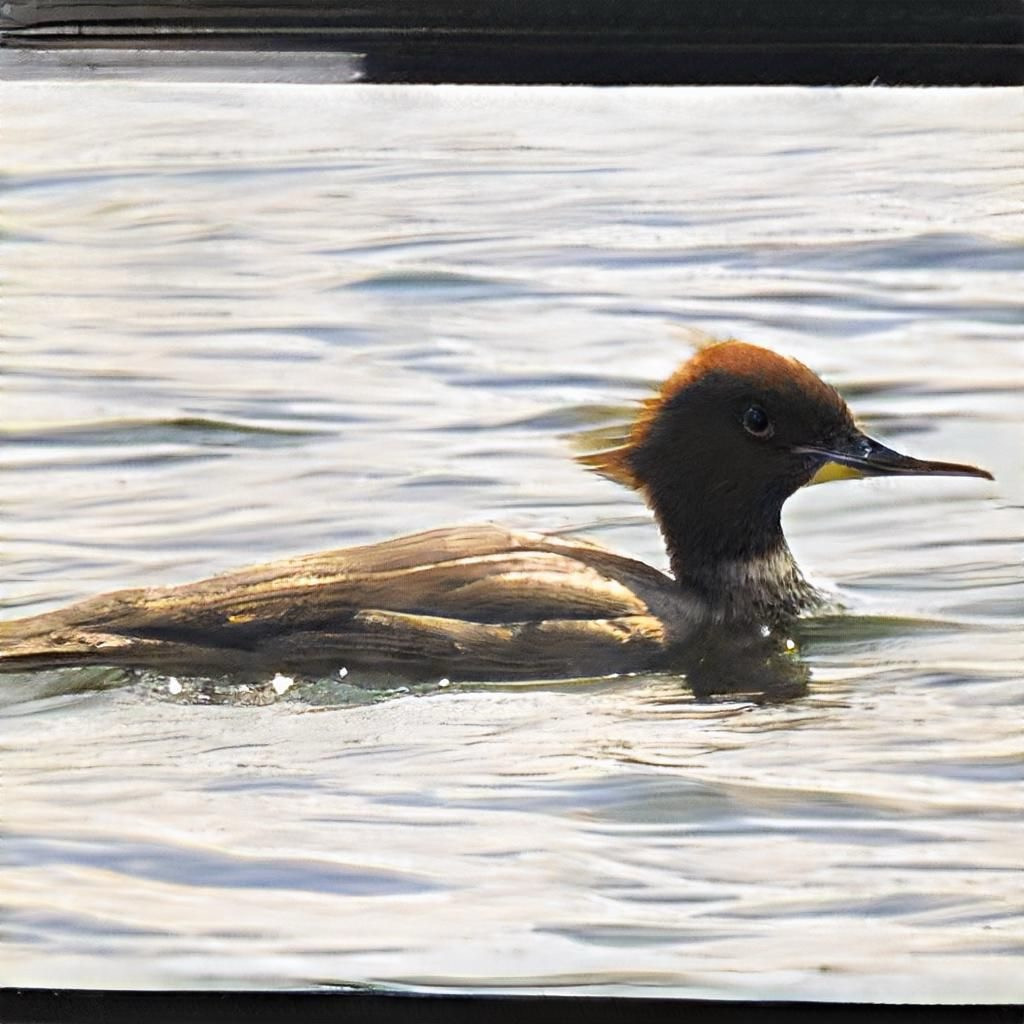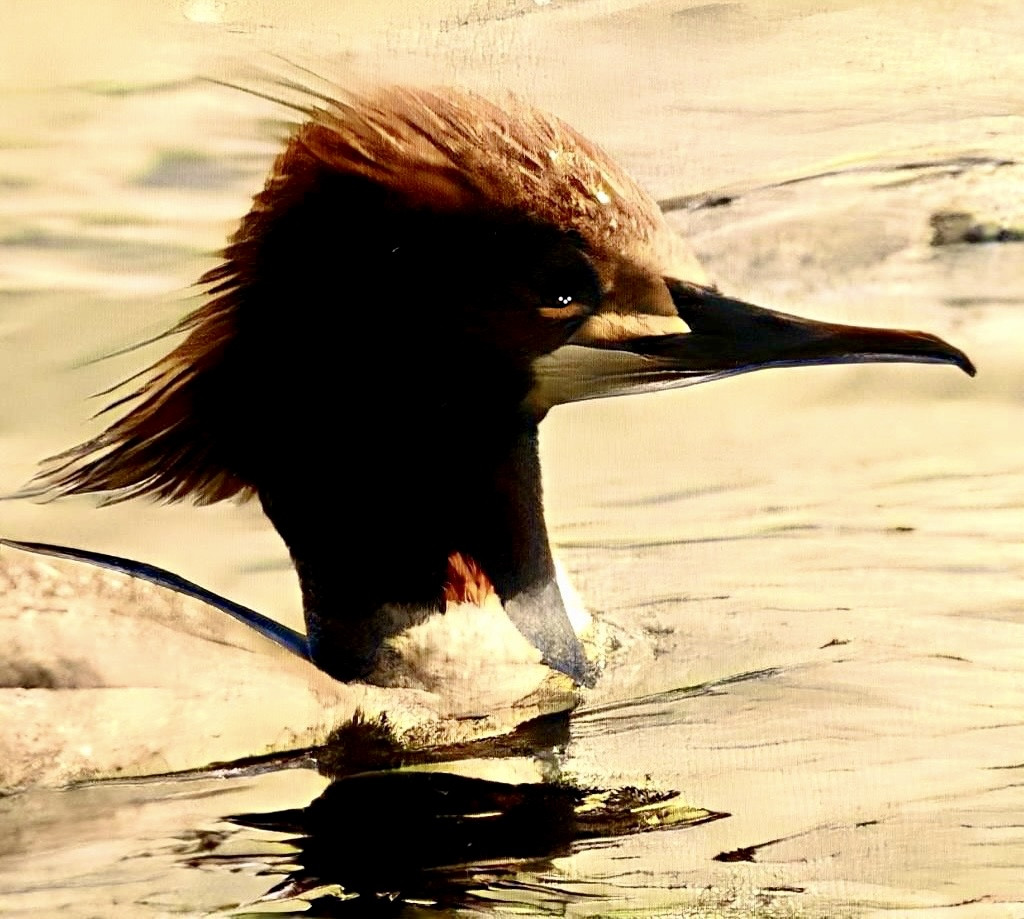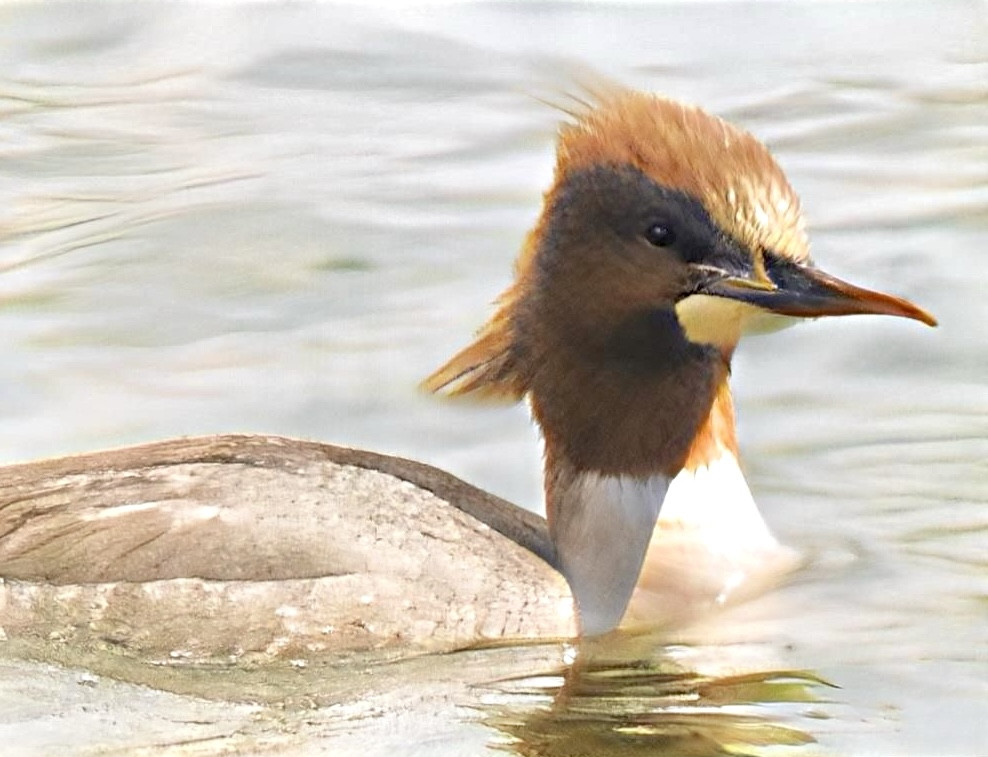Beschrijving
The deep waters around Lake Vättern are ice-free most years. This makes it an excellent wintering area for birds. The lake holds large wintering populations of gulls like Stormmeeuw, Zilvermeeuw and Grote Mantelmeeuw. This is also one of the best places for the rare Grote Burgemeester, although it is not seen most years. Most gulls winter around Motala. The area also holds wintering waterfowl. Most commonly: Grote Zaagbek, Knobbelzwaan, Blauwe Reiger, Wilde Zwaan, Kuifeend and Brilduiker. Around Vadstenaviken large amounts (many hundreds) of Wilde Eend winter. Often with other rarer (wintering) dabbling ducks in the mix. The lake also holds wintering populations of Aalscholver, Middelste Zaagbek, Nonnetje (visitors from Boren) Fuut, Dodaars, and during mild winters: Kuifduiker, Grote Zee-eend, Parelduiker and IJseend. The large fields around Vadstena and Norrsten hold wintering geese, Frater and Sneeuwgors. Many birds of prey also winter. Most common are Sperwer, and Zeearend.
During the last weeks of Febuari the first spring birds arrive. Spreeuw, Veldleeuwerik, Vink, and Kievit are usually the first to arrive. Some of the previously mentioned birds might start to winter if the winters continue to be mild. Many geese like Brandgans, Grauwe Gans, Taigarietgans, Kolgans Toendrarietgans and Grote Canadese Gans are often seen. Most geese congregate around Tycklingen and Norrsten. Sometimes Kleine Rietgans is also found.
During March most of the geese increase in number. More birds of prey arrive: Ruigpootbuizerd, Torenvalk, Slechtvalk, and Rode Wouw. In Vadstenaviken large amounts of dabbling ducks often rest. Bergeend (Regular), Kokmeeuw, Scholekster, and Watersnip also arrive during this period. From this period onwards Grote Zilverreiger is sometimes seen.
During April other wader along with Kneu and Graspieper arrive. During April-May large amounts of passerine birds, wader, gulls, and terns use the lake as a landmark for migration. It starts in the middle of April with thousands of Vink and Keep, continuing with thousands of Wulp, with smaller amounts of other waders like Regenwulp, Rosse Grutto, Kemphaan and Tureluur. Also large amounts of gulls like Kokmeeuw and Stormmeeuw. In early May hundreds of terns (Visdief, Noordse Stern) pass. Along with rarer birds like Zwarte Stern, Drieteenmeeuw (quite rare) and Dwergmeeuw.
During the summer many species of night-active birds can be heard like Sprinkhaanzanger, Noordse Nachtegaal, Kwartelkoning, Grote Karekiet (vadstena reningsverk), Kwartel and sometimes Krekelzanger. Many other warblers can be found during this period. In the cities of Motala and Vadstena city birds like Turkse Tortel, Groenling, Zwarte Roodstaart (missing most winters), Keep, Rotsduif, and Zwartkop can be found year round.
Details
Toegang
Parking can be done at ample places. Some of them are: Tycklingen, Motala, Råssnäsudden, and Vadstena castle. Click on a P in the map to get directions to that area.
Terrein en leefgebied
Bos , Wetland , Verspreide bomen en struiken , Grasland/weide , Dal , Vlakte , Hoogvlakte , Meer , Strand , Slikken , Landbouw , Rietvelden , Rivier , Stad/dorpOmstandigheden
Vlak , Heuvelachtig , Zanderig , Nat , Open landschapRondlopende wandeling mogelijk?
JaTelescoop meenemen?
Kan handig zijnWanneer hier vogels kijken?
Het hele jaarToptijd voor dit gebied
WinterRoute
Verharde wegZwaarte wandeling
GemiddeldToegankelijk via
Te voet , Fiets , AutoVogelkijkhut aanwezig?
NeeExtra info
Be respectful of the birds. Especially during breeding season.






